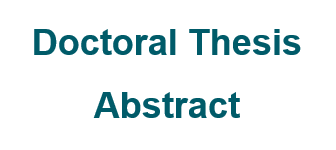Nicarbazin evaluation as a management tool to reduce eared doves (Zenaida Auriculata) damage
DOI:
https://doi.org/10.31285/AGRO.26.1495Palavras-chave:
nicarbazin, birds, birth controlResumo
Eared doves (Zenaida auriculata) cause losses in confined cattle production and damage in agricultural crops. Because to population size and limitations in the current available techniques, contraceptive methods appear as a complementary alternative to reduce damage in Uruguay. The objective of this thesis was to study the feasibility of nicarbazin as a contraceptive for eared doves. The acceptance of three presentations of bait (0.5 % nicarbazin) was evaluated: OvoControlS® pellets; mixture of OvoControlS® with cracked corn; and cracked OvoControlP® pellets. Intake of each presentation per bird and per day was measured in 10 eared doves. Cracked OvoControlP® was the only formulation with a weekly average consumption greater than 1,0 g/dove/day. Later, the nicarbazin dose to significantly reduce reproduction in 11 pairs of doves was determined at the aviary. Three experimental phases were used: pre-treatment (reproductive cycle before contraceptive was supplied), treatment (cycle under the effect of nicarbazin) and recovery (cycle after interrupting the product). Bait intake per day (g/pair) and reproductive variables were recorded. A 62 % statistical reduction in the number of viable eggs and successful fledgling was found in the treatment phase vs. pre-treatment. This was reversed after stopping the intake of the product, since there were no statistically significant differences in the number of eggs between pre-treatment and recovery. The average consumption of bait per day in the pairs that produced zero or one fledgling was significantly higher than pairs that had two fledglings in the treatment. Finally, a bait management system was established and its efficiency was evaluated to supply it to eared doves in two farms with cattle raised under confinement. We worked with two experimental phases offering the feed in bait stations (EDC): pre-treatment (pelleted poultry ration mixed with wheat) and treatment (a contraceptive and wheat mix). Number of birds in EDC and food consumption were evaluated. The number of eared doves in the EDC was significantly higher than individuals from other bird species. The contraceptive intake per dove in both experiments was 0.19 and 0.12 g/dove/day, not reaching the minimum dose necessary to cause an effect on reproduction of the specie. We conclude that nicarbazin is an effective contraceptive for eared doves. Research should continue in the development of contraceptive bait, evaluation in nesting site and an integrated bird management plan.
Downloads

Publicado
Como Citar
Edição
Seção
Licença
Copyright (c) 2022 Agrociencia Uruguay

Este trabalho está licenciado sob uma licença Creative Commons Attribution 4.0 International License.
| Métricas do artigo | |
|---|---|
| Vistas abstratas | |
| Visualizações da cozinha | |
| Visualizações de PDF | |
| Visualizações em HTML | |
| Outras visualizações | |















